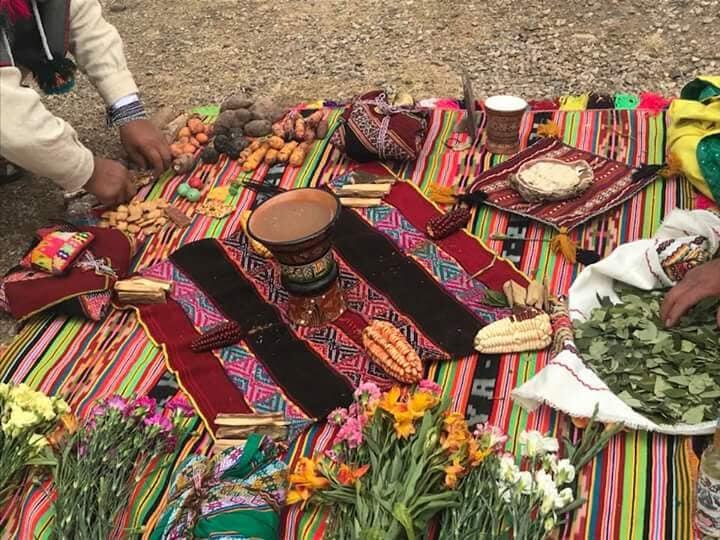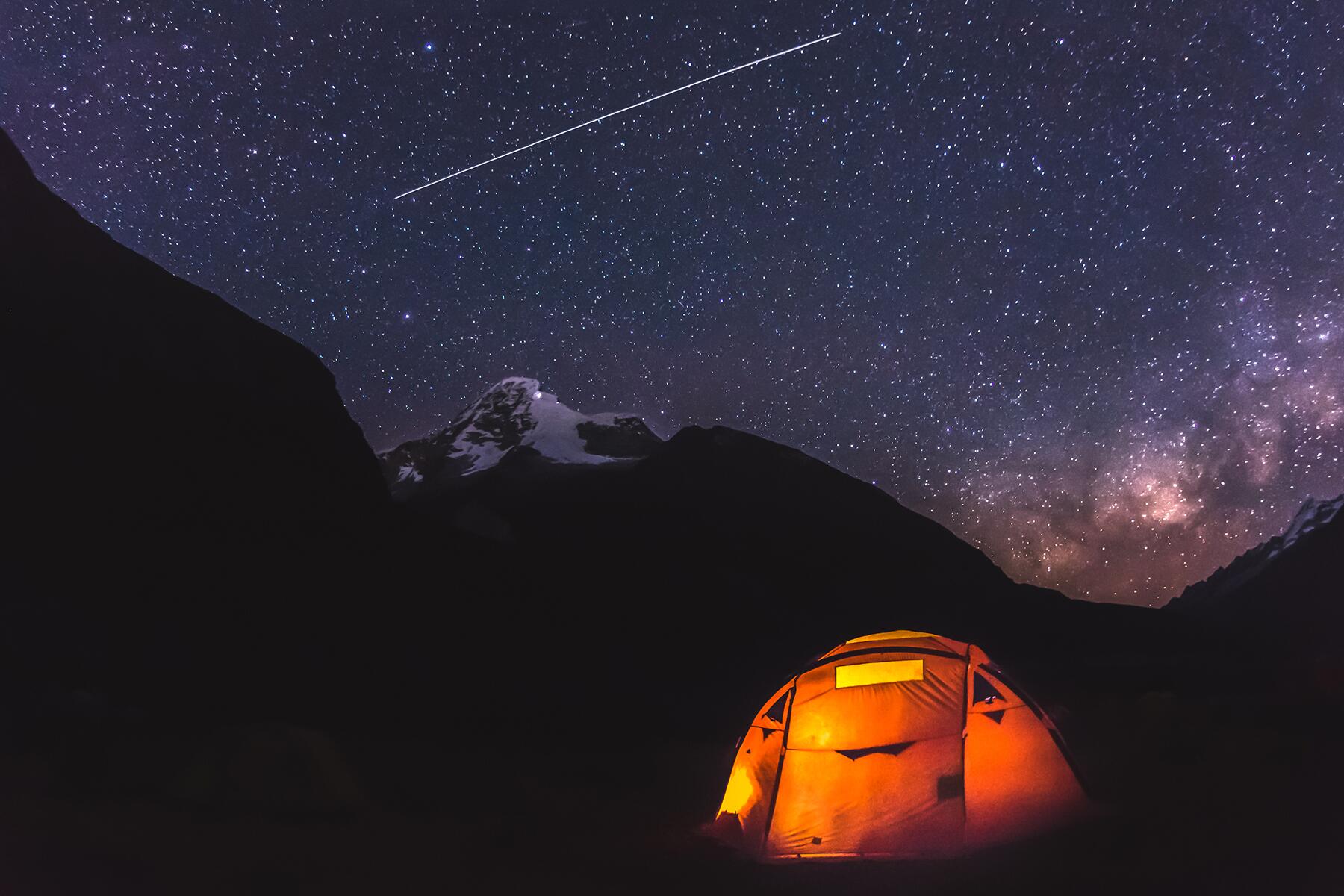Weeks before Peru closed the borders against COVID-19, Christian Antonio Yauri Cochachin saw something strange in the night sky.
“Ten of the stars were moving,” says Cochachin, an indigenous priest from the Peruvian Andes. “They were creating designs—it was a signal before the illness arrived in Peru. The stars communicated that it would happen.”
Cochachin lives on the outskirts of Huaraz, a low-slung city built of raw cement bricks in the foothills of Peru’s Cordillera Blanca, where the Andes rear up into a serrated line of ice-capped peaks. In Cochachin’s hillside compound, medicinal plants and lean chickens straggle across a dirt yard. Out behind the house, the 35-year-old priest conducts ceremonies using huachuma, a hallucinogenic cactus that grows wild in the surrounding mountains.
“I work with teaching plants,” says Cochachin, who forages for huachuma on the slopes of the Cordillera. He’s youthful, with an open face and floppy black hair. When he’s not decked out in a feathered headdress, Cochachin could pass for one of the mountain guides or foreign backpackers that hang out in downtown Huaraz.
Some of those backpackers find their way to Cochachin’s mountain home, hoping to try huachuma for themselves. In Peru, the chance to sample ancient, psychedelic plants has become a draw for foreigners looking for healing, enlightenment, or just an edgy adventure. But just weeks after Cochachin saw the stars swerve from their allotted arcs, the tourists fled Peru.
Recommended Fodor’s Video
“Huaraz is a cradle for tourism,” says Cochachin. “Now there’s nothing.”
While the city sees fewer visitors than the backpacker haunts of southern Peru, it’s a hub for travelers headed for the nearby peaks of Huascarán National Park. “Many restaurants, many hotels, they’re left with nothing,” says Cochachin. “The people who work here, where are we going to go?”

The huachuma ceremonies Cochachin offers travelers may be on hold, but he hasn’t lost sight of his role as a healer. It’s a family business: long before he was born, Cochin’s grandparents led ceremonies using huachuma, which is also called San Pedro; like the Catholic Saint Peter (called San Pedro in Spanish), the cactus is said to hold the keys to heaven.
“It’s in my roots,” says Cochachin. “I carry the blood of shamans.” An older brother initiated Cochachin with a dose of the native cactus, which contains the psychedelic alkaloid mescaline. “I had my first experience with magical flights, as we call them, at 14 years old.”
When handed a bitter, dark brew made from the cactus, the young teenager drank so much that he felt the hallucinogenic effects for two days.
“I saw many images,” he says. “I was connecting with many Incas, with many people of very ancient cultures.”
Cochachin envisions his work as the chance to share an important Andean practice. And huachuma, it turns out, is really, really old. In the Guitarrero Cave, just northeast of Huaraz, archeological evidence shows inhabitants were likely employing the cactus 10,000 years ago. Some scholars believe that’s the oldest evidence of mind-altering drug use on earth.
Since the flow of tourists stopped, Cochacin has been improvising: he’s offering local delivery of traditional meals cooked over his backyard fire and he’s posting meditation selfies from the edge of mountain lakes.
“The stars communicated that this would happen.”
And he’s not the only one making a change. Losing travelers has been a sudden shock for a country that depends on tourism to survive. Travel and tourism make up the third-largest industry in Peru, with millions of visitors coming each year to explore high mountains, tour ancient Inca ruins, and discover the charismatic city of Lima.
The influx of travelers has been a boon for the impoverished country, but tourism has brought concerns, too. Some formerly pristine natural places have been degraded by trash. Machu Picchu, an Inca stronghold that was named a UNESCO World Heritage Site in 1983, has been overwhelmed by high visitor numbers in recent years.
One casualty of all that tourism, says Cochachin, has been the integrity of the country’s plant medicine, at least in Cusco where some travelers come to try ayahuasca. Southern Peru has long been home to healers employing ayahuasca, which contains the psychoactive alkaloid DMT. The plant has been used in shamanic rituals for at least 1,000 years here. But the lure of tourists, and tourist dollars, drew another kind of practitioner.
“Other healers appeared, false healers,” Cochachin explains. “They think, ‘OK, I can use this to manipulate people.’” He says that travelers are part of the problem, too, because they aren’t always approaching the experience with the right perspective. “Some of them don’t want healing,” he says. “They want to experiment.”
It’s dangerous, Cochachin thinks, to use the powerful plants without an eye toward sustainability. “In Southern Peru, they prostituted the plant until the plant was so used up that they had to bring in more from far away.”
Cochachin worries that similar trends could arrive in Huaraz, which is more than 1,500 kilometers away from Cusco’s Ayahuasca retreat centers. But for now, COVID-19 has pressed pause on everything. Despite the economic blow and the human toll, Cochachin says he wonders if something good can come of all this, if the natural world can heal a bit while the virus keeps travelers at home.
“Three years ago, I started doing ceremonies for Mother Earth so there would be less contamination,” says Cochachin. It’s an issue that’s hard to ignore in Huaraz, where melting glaciers and climate change threaten the city with cataclysmic floods.
It’s not just the changing climate: popular tourist hikes, like the nearby Santa Cruz Trek, are strewn with plastic water bottles, mule droppings, and trash. For a culture that believes that mountains are the home of sacred spirits called apus, that careless treatment is a kind of sacrilege.
“I have been praying, doing ceremonies, speaking with the spirits,” Cochachin says. “So that once this situation has passed, people might finally understand.”



